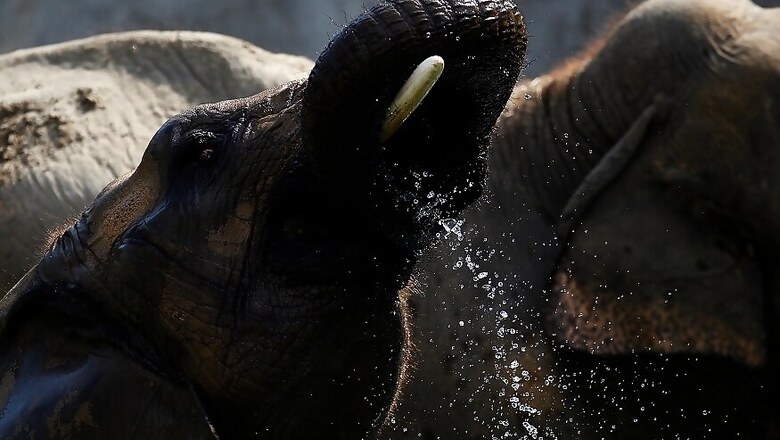
views
New Delhi: The mainland Asian Elephant, Great Indian Bustard and the Bengal Florican now have a stronger conservation shield globally. India’s proposal to include them in a global list of migratory species, which are endangered or are in danger of facing extinction in near future in their global range, was successfully adopted on Thursday. India moved the proposals at the ongoing global triennial meet on conservation of migratory wildlife being held at Gandhinagar, Gujarat. The motion was adopted without any objections and also received the backing of Bangladesh, Sri Lanka and European Union.
The three species will be now included in the Appendix I of the Convention of Migratory Species (CMS), a global instrument under the United Nations Environment Programme that came into existence in 1983. There are 130 parties to the convention, which include 129 countries and the European Union. Parties to CMS that are a range state of these three species will have to step up efforts for their conservation. The parties will have to especially take efforts to prohibit hunting, trading, capturing and deliberate killing and restore their habitats.
Among the three species now listed under Appendix I, the Great Indian Bustard is facing the highest threat of extinction. There are only 150 of them in the wild largely concentrated in Rajasthan. Gujarat, Maharashtra, Karnataka and Andhra Pradesh have the remaining Bustard population. The large terrestrial bird is fighting for survival against habitat degradation, depredation of its eggs from humans and other wildlife and most crucially, windmills and energy infrastructure such as transmission lines and poles.
The bird is also facing threats across India’s western border in Pakistan’s Cholistan desert. Wildlife Institute of India had radio-tagged a few Bustard’s and found that they were moving into Pakistan where reportedly they are hunted. Pakistan’s own Houbara Bustard population, too, is hunted and its national government routinely issues hunting permits.
“All countries, including Pakistan, will have to adopt the conservation measures. Though the convention is not legally binding, Pakistan is a party to it and thus they will not be able to negate it with other parties to the convention putting pressure on them. With regards to elephants, Bangladesh is keen to further trans boundary cooperation to conserve the migratory population,” said Soumitra Dasgupta, Inspector General of Forest, wildlife, Ministry of Environment, Forest and Climate Change.
India has undertaken an in-situ breeding programme to revive the Bustard population which began in 2017. Speaking on the programme, YV Jhala of Wildlife Institute of India said, "The addition of the species in Appendix I will certainly push Pakistan to push for conservation of the Great Indian Bustard. Currently, nine Bustard hatchlings are being hand reared and we are looking at rearing 40 more."
While moving the proposal on Asian Elephant, India’s delegation stressed that annually more than 600 human lives and 450 elephant lives are lost each year across Asia and 80-85% in India and Sri Lanka alone.
The Bangladesh delegation pointed out during their support for India’s proposal that there is a population of 210-330 resident wild elephants and 79-107 are migratory. Sri Lanka also extended its unequivocal support for the proposal on elephant. India has nearly 30,000 wild elephants as per the last population estimation results of 2017.
The final species adopted under CMS Appendix I, the Bengal Florican, now number below 1,000 across India, Nepal, Cambodia and Vietnam. It is considered extinct in neighbouring Bangladesh, who is now seeking regional cooperation with India to restore habitats. The bird is ground dwelling and mid-size and is 60cms tall while standing. It is found in lowland, grasslands, patchy open forests and seasonally inundated. Hunting, human induced pressures such as land-use changes, change in ecology, degradation and power lines have been reasons for its decline.
Speaking on the adoption of the proposals, Amy Fraenkel, Executive Secretary of CMS said, "The Convention brings together the states through which migratory animals pass, and lays the legal foundation for conservation measures throughout the species’ migratory range. Listing on CMS Appendix I and concerted actions help achieve improve the conservation status of the species."




















Comments
0 comment